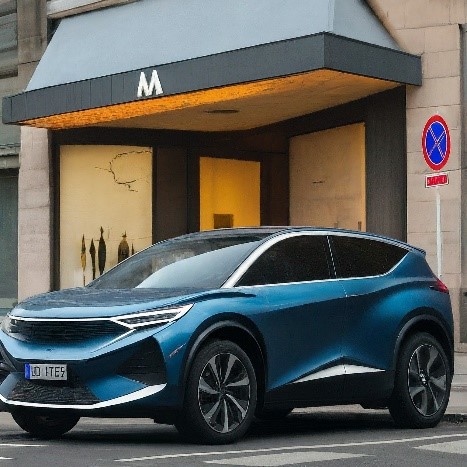生成式AI的未來展望
生成式人工智慧(Generative AI)是一種強大的技術,它通過算法來創造新的內容,如文本、圖像、視頻和音頻。這項技術在多個領域都有廣泛的應用,包括自然語言處理、機器翻譯、文本生成、圖像生成、智慧創作和推薦系統等方面。例如,在自然語言處理領域,生成式AI可以幫助計算機理解和處理人類語言,進行文本生成、文本分類和機器翻譯等任務。在文學創作方面,它能夠模仿特定作家的寫作風格或生成完全原創的作品。此外,生成式AI在圖像生成領域也顯示出巨大潛力,能夠通過學習和模擬圖像數據來創造新的圖像。隨著技術的不斷進步,生成式AI的應用前景日益廣闊,未來可能會在更多領域發揮重要作用。
目前,多家公司正在積極探索和應用生成式AI技術。例如,IBM公司不僅在其混合雲和AI平台中應用了生成式AI,還提供了與Red Hat OpenShift混合雲平台和IBM Watson AI及數據平台相結合的解決方案,以幫助企業在AI 2.0時代提升競爭優勢。另外,OpenAI是生成式AI領域的領先企業之一,它提供了如ChatGPT和DALL-E等多種內容生成解決方案,並得到了微軟等科技巨頭的支持。微軟本身也是生成式AI技術的重要推動者,其搜索引擎Bing已整合了聊天機器人功能,而且在Microsoft 365產品中也集成了基於GPT-4的輔助工具Copilot。此外,谷歌正在開發集成生成式AI支持的雲生態系統,以及致力於構建具有可擴展性和道德規範的人工智慧工具。這些公司的探索和應用,展示了生成式AI技術在不同行業中的廣泛潛力和實際價值。
生成式AI技術的應用領域非常廣泛,涵蓋了從藝術創作到科學研究的各個方面。在藝術和設計領域,生成式AI可以幫助藝術家和設計師創造新穎的圖案和作品。在音樂產業,它能夠創作音樂或模仿特定風格的曲目。在文學領域,生成式AI能夠撰寫詩歌、故事甚至是小說。在遊戲開發中,它可以用來生成複雜的遊戲環境和角色。在教育和研究中,生成式AI可以幫助生成教學材料和模擬實驗數據。在醫療領域,它可以用於藥物研發和個性化治療方案的制定。此外,生成式AI還被用於新聞產業,自動生成新聞報道和文章。在商業領域,它可以用於生成市場報告、預測趨勢或者自動化客戶服務。這些只是生成式AI技術應用的一部分例子,隨著技術的不斷進步,其應用範圍將會更加廣泛。
Generative AI is a powerful technology that creates new content, such as text, images, videos, and audio, through algorithms. It has a wide range of applications across various fields, including natural language processing, machine translation, text generation, image creation, intelligent composition, and recommendation systems. For instance, in the field of natural language processing, generative AI helps computers understand and process human language, performing tasks such as text generation, text classification, and machine translation. In literary creation, it can mimic the writing style of specific authors or generate entirely original works. Additionally, generative AI has shown tremendous potential in image generation, creating new images by learning and simulating image data. As technology continues to advance, the application prospects of generative AI are becoming increasingly broad, and it may play a significant role in many more fields in the future.
Currently, several companies are actively exploring and applying generative AI technology. For example, IBM not only applies generative AI in its hybrid cloud and AI platform but also offers solutions that combine with the Red Hat OpenShift hybrid cloud platform and IBM Watson AI and data platform to help businesses gain a competitive edge in the AI 2.0 era. Furthermore, OpenAI is one of the leading companies in the field of generative AI, offering a variety of content generation solutions such as ChatGPT and DALL-E, supported by tech giants like Microsoft. Microsoft itself is also a significant proponent of generative AI technology, having integrated chatbot functionality into its Bing search engine and incorporated the GPT-4-based assistant tool Copilot into Microsoft 365 products. In addition, Google is developing an integrated cloud ecosystem with generative AI support and is committed to building artificial intelligence tools that are scalable and ethically governed. The exploration and application of these companies demonstrate the extensive potential and practical value of generative AI technology across different industries.
The application areas of generative AI technology are incredibly diverse, covering everything from artistic creation to scientific research. In the arts and design, generative AI can assist artists and designers in creating novel patterns and works. In the music industry, it can compose music or mimic specific styles of tracks. In literature, generative AI is capable of writing poems, stories, and even novels. In game development, it can be used to generate complex game environments and characters. In education and research, generative AI can help produce teaching materials and simulate experimental data. In the medical field, it can be used for drug development and the formulation of personalized treatment plans. Moreover, generative AI is also used in the news industry to automatically generate news reports and articles. In the business sector, it can be used to generate market reports, forecast trends, or automate customer service. These are just some examples of the applications of generative AI technology, and as the technology progresses, its application scope is expected to become even more extensive.




